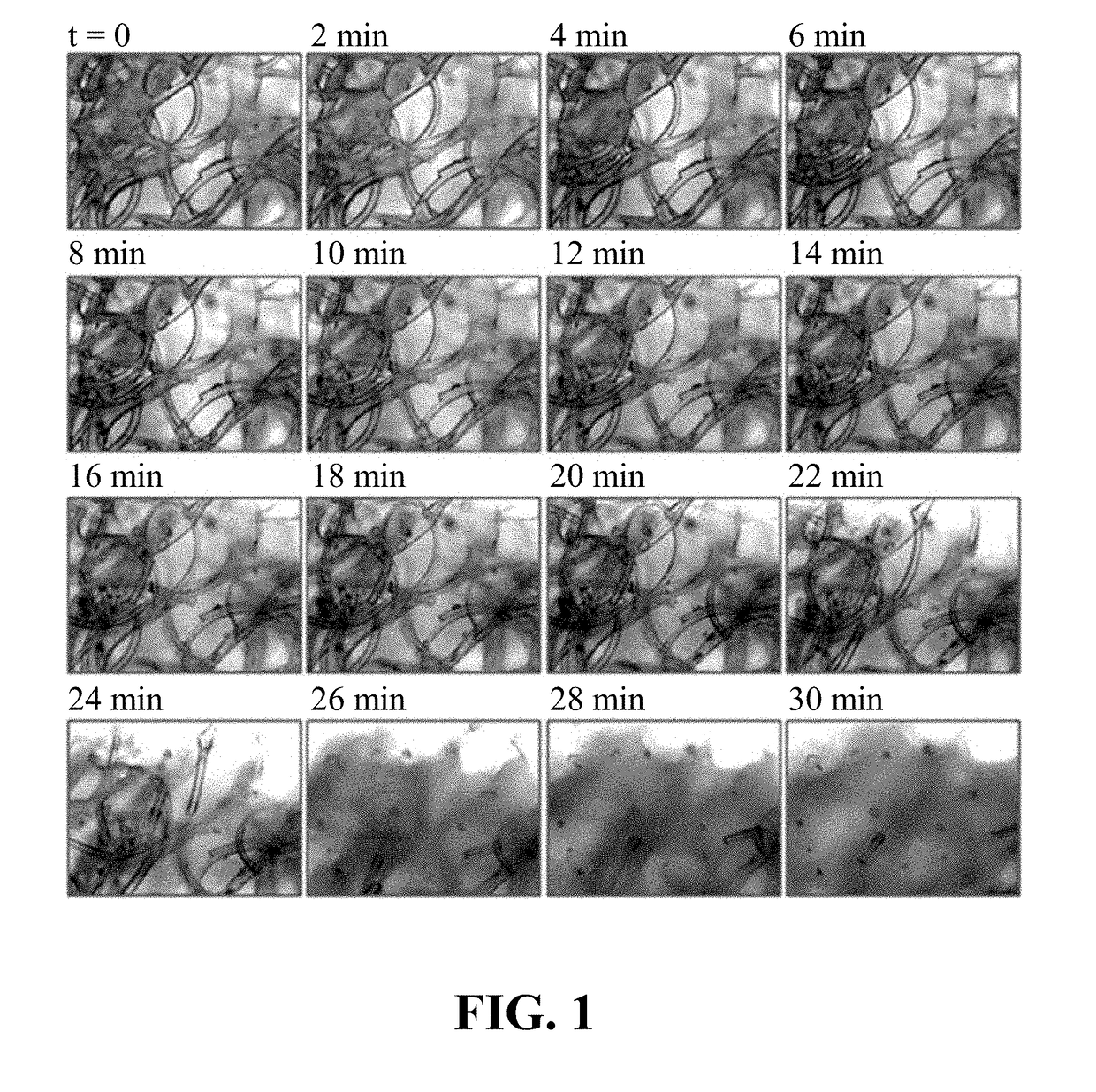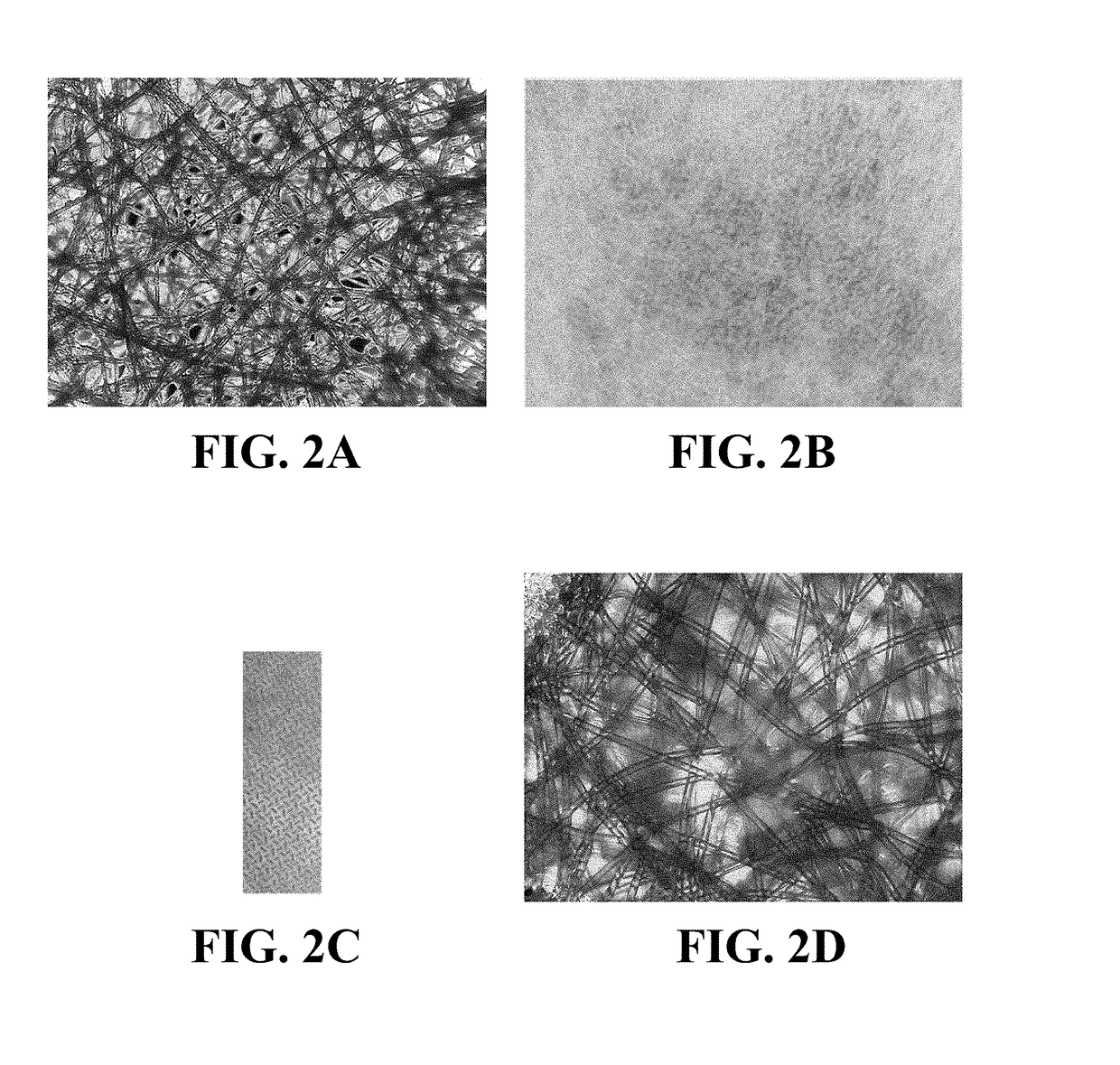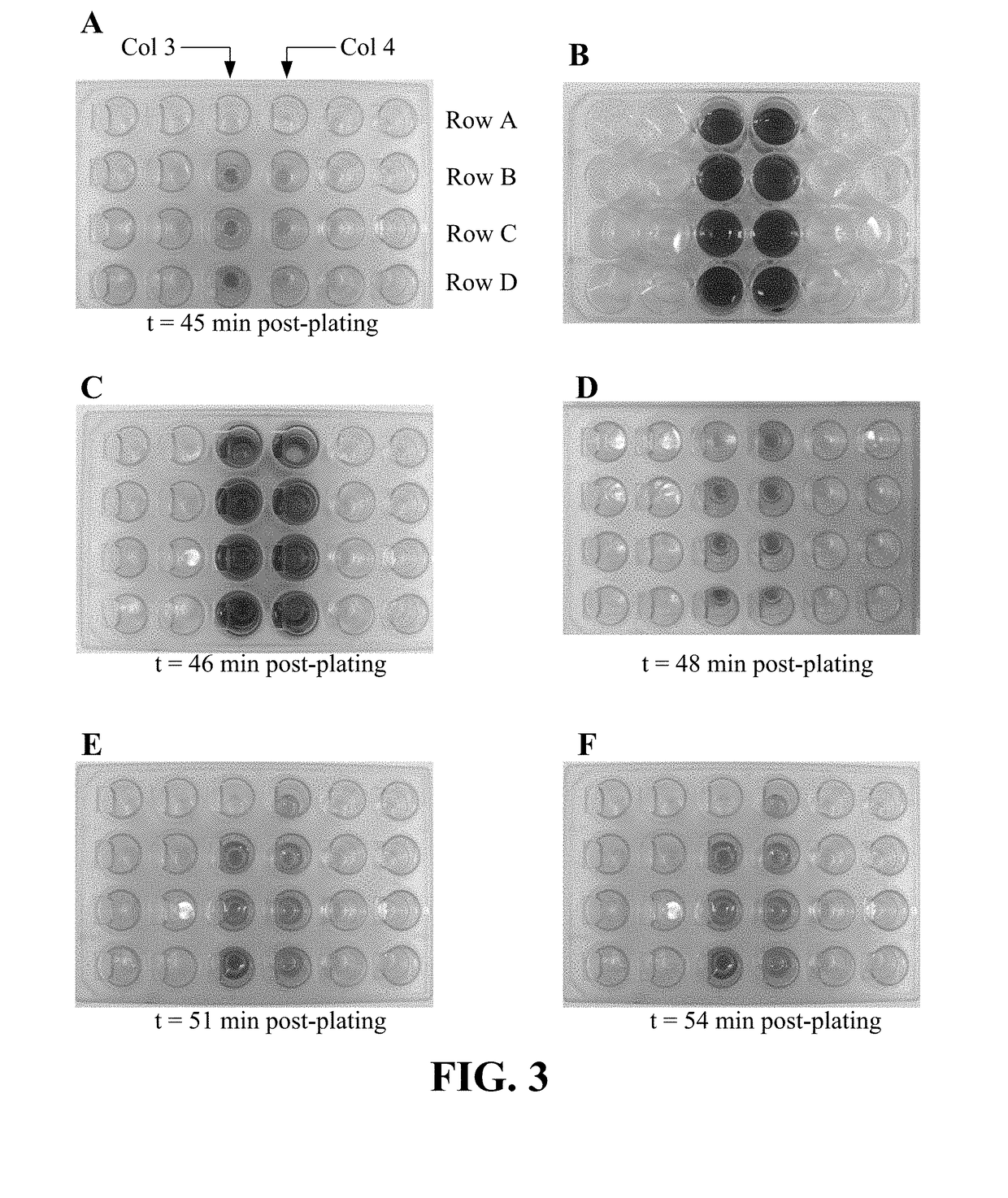Intra-culture perfusion methods and applications thereof
a perfusion method and technology of intra-culture, applied in the field of intra-culture perfusion methods and applications thereof, can solve the problems of difficult to grow and maintain such cultures, difficult to deliver and distribute nutrients, drugs and other compounds intra--3d-culture for physiologically closer tissue modeling, etc., and achieve the effect of limiting the loss of cell signaling molecules
- Summary
- Abstract
- Description
- Claims
- Application Information
AI Technical Summary
Benefits of technology
Problems solved by technology
Method used
Image
Examples
example 1
The Anchoring (Hydrophilic, Absorbent) Scaffold Compositions Comprising Hydrophilic and Absorbent Synthetic Vasculature which Extended to all Exterior Surfaces of the Scaffold
[0083]U.S. Provisional Patent Application Ser. No. 61 / 712,943 and the U.S. patent application Ser. No. 13 / 962,403 disclosed production methods and materials which were suitable examples of 3D scaffolds comprising absorbent synthetic vasculature, wherein the vasculature extended to all exterior surfaces of the scaffold. In one embodiment, the entire 3D scaffold was absorbent and made from PVOH fibers. In another embodiment, the scaffold was made of borosilicate glass fibers coated with the absorbent polyvinyl alcohol (PVOH). In a further embodiment, scaffold compositions comprising PVOH fibers and PVOH-coated borosilicate glass fibers were disclosed. In another embodiment, the scaffold was made using absorbent fibrillated cellulose fibers and PVOH-sized borosilicate glass fibers. In yet another embodiment, the s...
example 2
Additional Anchoring, Hydrophilic and Absorbent, Scaffold Compositions Comprising Hydrophilic and Absorbent Synthetic Vasculature which Extended to all Exterior Surfaces of the Rigid Scaffold
[0088]A material comprising a blend of cellulose and synthetic fibers with PVOH binder was acquired from Pall Corporation, product No. SMCON01 (conjugate pad type 8301). According to the supplier the material thickness was 355.6-444.5 μm, typical basis weight of 50 g / m2, tensile strength of 10.3 lbs in MD, water absorption capacity of 28 μl / cm2 and the average wicking rate of 226 seconds per 3 cm. The material was punched into disks of 9.5 mm in diameter. The measured thickness was approximately 400 μm. FIG. 2A shows a 4× photograph of the material in bright field after staining with a brown dye solution in DI water, followed by 30 minute room temperature drying. At least one type of fiber and / or its coating was absorbent and swollen in the aqueous solution (and stained dark). In wicking tests, ...
example 3
Methods of Controlling the Volume Fraction of Synthetic Vasculature and Capillary-to-Capillary Distances
[0090]The vasculature volume fraction is an important factor in modeling vascularized tissues using 3D cell culture models. Tissues that are perfused in vivo generally have different volume fraction of capillaries within their interior. Accordingly, to model said tissues using 3D cell cultures, a control of the synthetic vasculature volume fraction was desirable. Production methods disclosed herein and in U.S. Provisional Patent Application Ser. No. 61 / 712,943 and in U.S. patent application Ser. No. 13 / 962,403 enabled the control of synthetic vasculature volume fraction by controlling mass fraction of the absorbent component in the final scaffold composition during manufacture, using the exemplary wet-laid process among other disclosed methods, provided for a mixture of absorbent fibers, absorbent fibers and other fibers, absorbent coating on the fibers etc.
[0091]While in most in ...
PUM
| Property | Measurement | Unit |
|---|---|---|
| flow rate | aaaaa | aaaaa |
| thickness | aaaaa | aaaaa |
| thicknesses | aaaaa | aaaaa |
Abstract
Description
Claims
Application Information
 Login to View More
Login to View More - R&D
- Intellectual Property
- Life Sciences
- Materials
- Tech Scout
- Unparalleled Data Quality
- Higher Quality Content
- 60% Fewer Hallucinations
Browse by: Latest US Patents, China's latest patents, Technical Efficacy Thesaurus, Application Domain, Technology Topic, Popular Technical Reports.
© 2025 PatSnap. All rights reserved.Legal|Privacy policy|Modern Slavery Act Transparency Statement|Sitemap|About US| Contact US: help@patsnap.com



